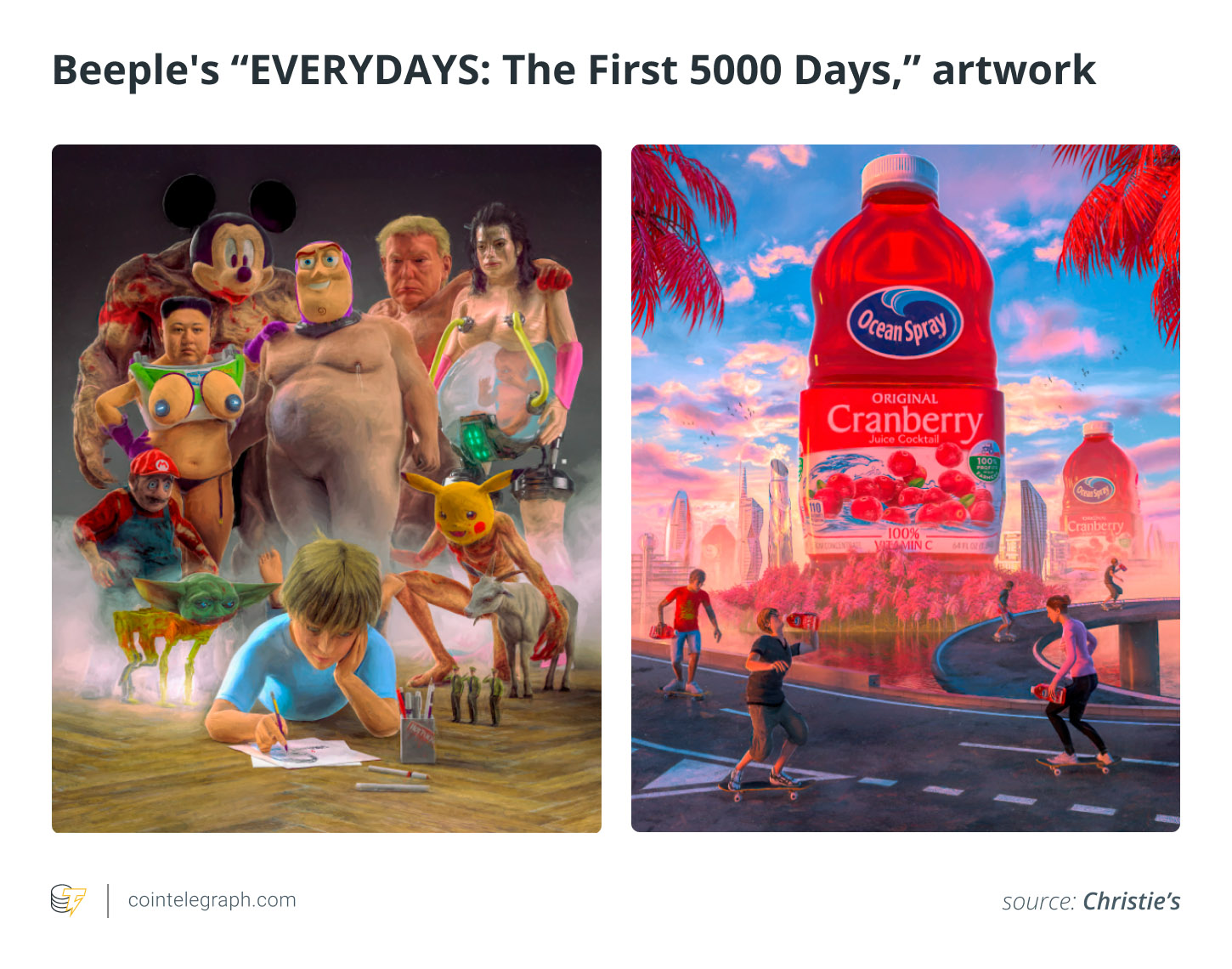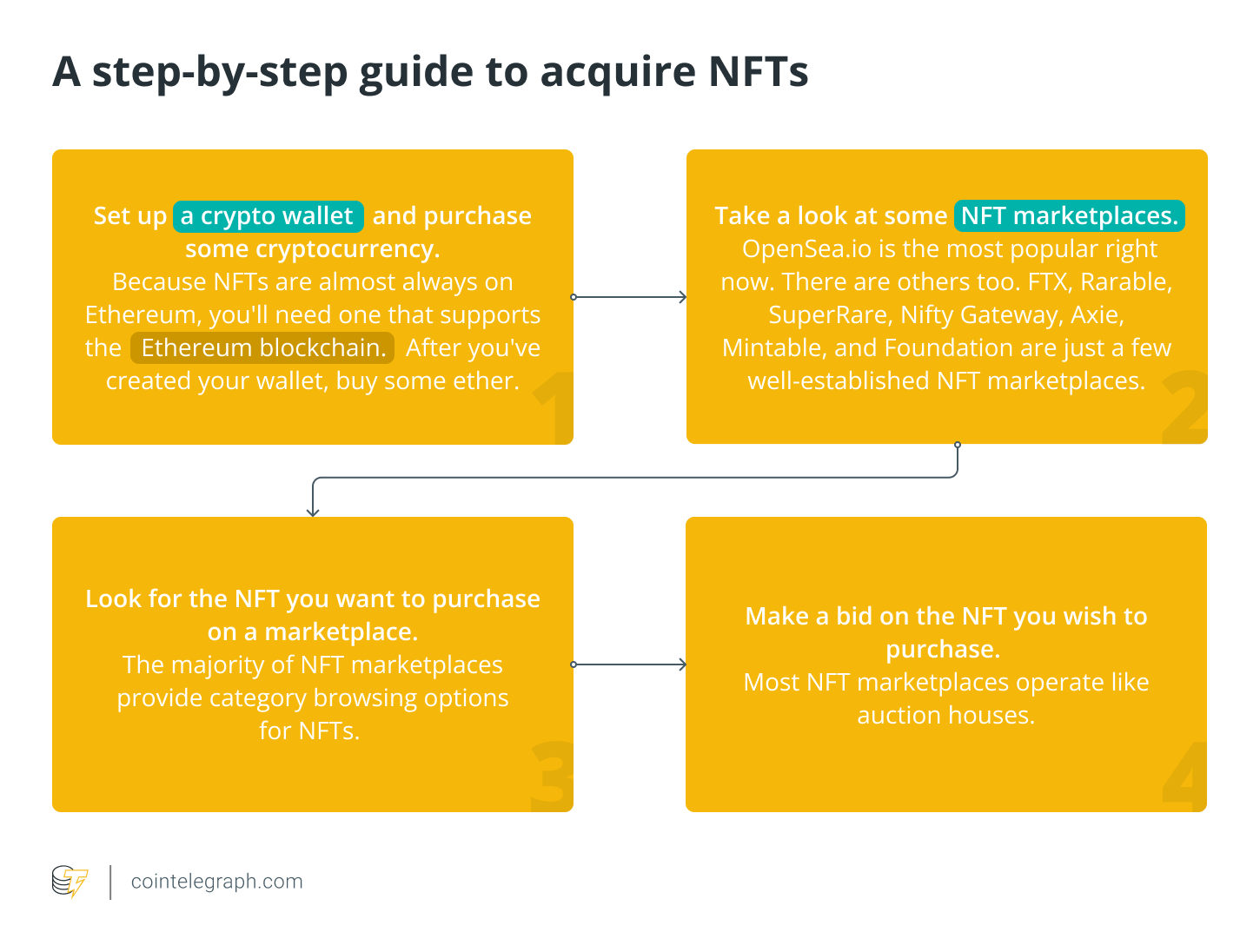What are NFTs and how do they work?
Nonfungible tokens, or NFTs, are digital assets that represent anything from art to music to videos. Although NFTs may be used to buy and sell digital artwork, they can also be used to represent real-world assets. An NFT essentially proves that the digital (or real-world) asset it represents is genuine.
Why is proving originality important? Because anything that exists in the digital world can be copied and there's no limit to how many times it may be done. However, just like anything that exists in the metaphysical world, there is only one original—even for digital assets.
Vincent van Gogh's "Starry Night," for example, probably has millions of iterations by now. We see the famous artwork on mugs, art prints, magazines, digital art and more. And yet, there is still just one original painting in the whole world. It's the one that van Gogh painted in France in 1889, which is currently on display at the Museum of Modern Art in New York.

Despite its many copies and the billions more that will probably be made in the future, van Gogh's original artwork will remain the most valuable. In the same vein, NFTs attach value to assets by proving their originality in a sea of copies.
This article will explain how to invest in NFTs as well as the various risks and returns associated with NFTs.
How are NFTs purchased and sold?
NFTs are often purchased and sold online, frequently using cryptocurrency, and they are generally programmed with the same underlying software as many cryptos. Despite their long history, NFTs are sought after now because they are becoming a popular method to acquire and trade artworks. According to Reuters, NFT sales hit the $25 billion mark in 2021 and show no signs of slowing down anytime soon.
People new to NFTs might wonder what the big deal is, especially for digital artworks that may also be viewed, screenshotted and downloaded online. Beeple's “EVERYDAYS: The First 5000 Days,” for example, was sold at Christie's for $69.3 million but can also be viewed online for free.

In addition to purchasing NFT art as an investment, collectors also value the very proof of owning the original items. In layman's terms, such digital "bragging rights" afforded by the built-in authentication of NFTs hold a lot of value, especially among collectors.
NFTs are not just for artwork, either. Gamers and collectors can now become the immutable owners of in-game objects and other unique assets, and make money from them too.
Players can also develop and profit from structures like casinos and theme parks in virtual worlds, such as The Sandbox and Decentraland. They can also sell digital items they collect throughout gameplay, such as avatars, costumes and in-game money on a secondary market.
How to invest in NFTs
Now that you understand a little more about what NFTs are, you may be wondering how to invest in them. Buying NFTs isn't as simple as buying Ether (ETH), the Ethereum blockchain's native cryptocurrency. In addition, NFTs aren't available on cryptocurrency exchanges, so you'll have to look somewhere else.
Here's a step-by-step guide on how to acquire these digital tokens:

Another thing to be cautious about when purchasing NFTs is the gas fees. If you've never transacted in Ether before, you should know that it has an additional gas fee, which is the money paid to complete the transaction. If the gas fees are high, you may want to wait a while before buying NFTs since some buyers have ended up paying more in gas fees than they did for the NFT.
You may also invest in NFTs through a venture capital fund that invests in NFTs and crypto infrastructure if you're not keen on buying them yourself. Note, however, that to go the VC route, you'll need to be an accredited investor first.
If you don't have accreditation, there are other avenues to explore, such as purchasing an exchange-traded fund that is NFT-focused, like the Defiance Digital Revolution ETF, which invests in NFT stocks, blockchain and cryptocurrency.
If you need more in-depth information, read our guide on how to buy and sell nonfungible tokens.
What are the advantages of NFTs?Authenticity
The advantages of non-fungible tokens are reliant on the tokens' uniqueness. As mentioned before, it's impossible to make a counterfeit NFT due to the uniqueness of each token. Because NFTs are created on the blockchain, each is associated with a unique record.
This is an assurance as the buyers know they're getting the real thing and not a fake. NFT creators can resolve to issue a limited number of NFTs, making supply scarce and thus increasing their value.
Ownership
The main advantage of nonfungible tokens is their proof of ownership. Because NFTs are on a blockchain, they help identify ownership with a single account. They are also indivisible, making it impossible for them to be divided among different owners. At the same time, NFTs' ownership advantage guarantees that buyers never have to worry about counterfeit NFTs.
Critics argue that one could just snap a photo of NFTs and sell them or give them away. While you certainly can have an image of an NFT, it is not equivalent to owning the original asset. For example, downloading a photo of a Monet from the internet does not make you its owner.
Content ownership
One of the biggest advantages of NFTs is that they give content creators complete ownership over their creations. With traditional publishing models, content creators often encounter problems with platforms that hog the profits and earning potential.
For instance, digital artists who publish their content on these platforms make money through ads shown to the artists' fans. However, this money does not all go directly to the artist. Part of it goes to the platform instead. Sometimes, a bigger chunk, if not all of the profit, goes to the platform.
NFTs can help content creators bypass the need to transfer content ownership to platforms they use to publish their content. Through NFTs, content ownership is directly integrated into the content alone. When creators sell content, the profit directly goes to them. Should a new owner sell the NFT, royalties may also go to the owner if they were able to set up smart contracts for such.
Transferability
NFTs are also easily transferable. It's easy to trade NFTs on certain markets with various options for trading. This makes it incredibly easy for buyers and sellers to move NFTs around without the fear of losing them or having them stolen.
Game developers, for instance, may issue in-game items as NFTs, which players may store in their digital wallets. Players can then utilize the game goods outside of the game or even sell them for a profit. Ownership transfers are made easier with smart contracts since NFTs are based on them. Ownership transfers can be completed between buyer and seller when certain conditions are met, as specified in smart contracts.
What are the risks of NFTs?
The risks associated with NFTs are explained in the sections below.
Smart contract risks
In certain scenarios, hackers can attack a DeFi network and steal large amounts of crypto by taking advantage of weak points in smart contracts. The recent Poly Network hack is an example, and $600 million worth of NFTs were stolen. The main reason for the hack was that the smart contract security was weak, creating an entry point for attackers.
The large-scale attack on a prominent DeFi network such as Poly Network is proof that smart contracts can put networks at risk for attacks if there are flaws in the code.
Evaluation challenges
One of the biggest challenges in the NFT market is evaluation. A lot of uncertainty still surrounds NFT price determination as there are still no standards in place. While the price of NFTs is largely determined by things like uniqueness, creativity and scarcity, the prices tend to fluctuate a lot.
Price fluctuation remains constant because people find it challenging to pin down factors that might drive NFT prices. As such, NFT evaluation remains a huge challenge.
Legal challenges
No legal definitions of NFT currently exist in any country. This is because there is still no international organization in charge of implementing regulations globally where NFTs are concerned.
Due to the increased interest in NFTs, the need for a regulatory body is becoming more apparent by the day. The applications for NFTs have evolved significantly as well. There is a need for a regulatory framework with well-defined rules and regulations in place in such a scenario.
Cyber threats
Alongside their rise in popularity, the instances of cyber attacks on the NFT market have also increased. In certain instances, fake replicas of entire NFT stores are set up online to lure unsuspecting buyers.
Fake NFT stores pose as the real ones by imitating their content, logos and branding. The only difference is that they are selling NFTs that are technically nonexistent in the real world and online.
Malicious actors may also impersonate famous NFT artists and sell their artworks, passed off as the prominent NFT artist's work. Online fraud remains a risk within the NFT market due to issues like fake NFT giveaways, copyright theft, fake stores and NFT artist impersonation.
Intellectual property rights
NFT ownership is a benefit when buyers are certain they are purchasing from a legitimate source. However, purchasing NFTs from less reputable markets and buyers may put buyers at risk of purchasing replicas being passed off as originals. Buyers must therefore practice caution and do their due diligence in verifying whether the seller owns the NFT they're selling.
When a buyer purchases a replica of an NFT, they only receive the right to use the NFT and not its intellectual property rights. This remains a weak point in NFT trading because there are still no intellectual property rights (copyright, trademark, moral rights, etc.) for decentralized blockchain technology.
Challenge of considering NFTs as securities
According to the Securities and Exchange Commission, most NFTs in the market are currently sold as securities. As such, there are also a lot of buyers considering purchasing NFTs as securities.
Risk is introduced among buyers considering NFTs as securities because not all NFTs are securities. Technically, for NFTs to be eligible as securities, they first need to pass parameters set by the Howey test for securities.
Whether an NFT is a security depends on specific circumstances. If an NFT represents ownership of an artwork, game collectible or similar item, it is not a security. On the other hand, if an NFT is promoted as a speculative investment and as something that will increase in value over time, it can be considered an investment contract. Under the U.S. Supreme Court's mandate, investment contracts are broadly-categorized assets that function like securities.
Are NFTs a good investment?
This is a question that is still up for debate, as the value of NFTs is highly dependent on the specific use case. Some examples of good investment cases for NFTs are when they are used to represent ownership of an artwork or game collectible. Other than that, it isn't easy to make a general statement about whether or not NFTs are good investments.
The regulatory uncertainty around NFTs poses a significant obstacle in the way of mass adoption. This lack of regulation means that buyers and sellers do not have rules to abide by when conducting transactions, making it difficult to assess and mitigate risks when buying or selling NFTs.
Disclaimer : The above empty space does not represent the position of this platform. If the content of the article is not logical or has irregularities, please submit feedback and we will delete or correct it, thank you!